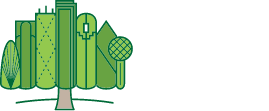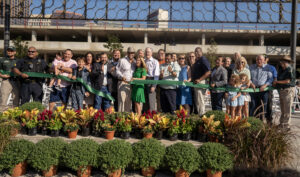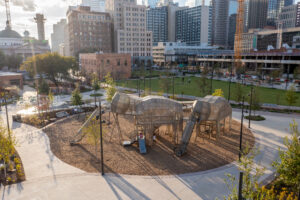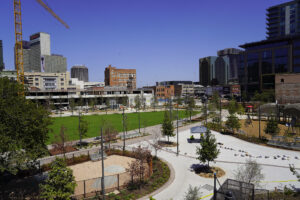Every citizen deserves a great park within a 10-minute walk of their home — this is the premise behind the Trust for Public Land’s ParkScore Index. Using this comprehensive tool, every year TPL evaluates park access and park quality in the 100 largest cities in the U.S. How does Dallas stack up against the competition? The answer lies in how we break down the TPL’s top five cities for public parks and contextualize our own ParkScore rating.
5. Portland, Oregon
The largest city in Oregon currently dedicates 18 percent of its land to parks — scoring an almost perfect 19 out of 20 on the index. The average public park in Oregon measures approximately 4.6 acres. However, Portland’s largest municipal park, Forest Park, spans a whopping 5,172 acres. That makes it the largest wilderness park in the U.S. to be located within city limits.
4. Washington, D.C.
Our nation’s capital isn’t just home to the U.S. government. It’s also a mecca for public parks. The National Mall, first established in 1791, is technically a public park and just one of the many green spaces that double as major tourist attractions. Interestingly, Washington’s parks tend to have a smaller overall footprint than cities of comparable size and population density. In fact, the capital’s median park size is a little over 1.5 acres. Yet, because 22 percent of the city has been reserved for green space, most Washingtonians can easily walk for 10 minutes (or less) and find themselves in a public park.
3. San Francisco, California
Given its cultural reputation, it’s perhaps not very surprising that the “City by the Bay” knows how to manage green space. 100 percent of San Francisco’s total population can claim 10-minute-walk access to a park. Most famous among these parks is Golden Gate Park, which comes in at over 1,000 acres and is by far the most visited of the city’s outdoor public spaces.
2. St. Paul, Minnesota
Minnesota’s notoriously cold winters are no match for all the public parks St. Paul makes available to its citizens. The state capital scores a perfect 20 out of 20 for basketball hoops per 10,000 residents and recreation/senior centers per 20,000 residents. It also earns high marks for both its dog parks and playgrounds, giving its almost 300,000 city residents a wide array of outdoor options from which to choose — and year-round.
1. Minneapolis, Minnesota
Minnesota makes the list again, this time securing the top spot thanks to Minneapolis. St. Paul’s next-door neighbor currently devotes over 5,000 acres of public land to green space, with about 97 percent of the population living within that all-important 10-minute walk of a public park. More importantly, this percentage remains consistent across several key demographics. For example, low-income residents of Minneapolis are just as likely to enjoy park access as the city’s high earners.
Where Does Dallas Fall?
According to the 2017 ParkScore Index, Dallas is a middle of the pack city and currently ranks 50 out of 100. The good news is that more than half — 60 percent — of us live within a 10-minute walk of a public park. Moreover, our parks are quite large on average: 7.6 acres. Yet only 13 percent of the open outdoors that fall within Dallas’ city limits is currently reserved for public use. Finally, it may surprise some residents to learn that the city’s largest green space does not surround White Rock Lake in East Dallas or straddle Woodall Rogers Freeway near Uptown in the form of the highly popular Klyde Warren Park. At 3,150 acres, Dallas’ largest park is the Downtown-adjacent Trinity River Greenbelt.
As we look forward to the city’s future, we can anticipate that these numbers will change. With four new Downtown parks in the works, Dallas is poised to rise in the ParkScore rankings over the next several years. Carpenter Park alone will add 5.6 acres of green space and connect Downtown with Old East Dallas, opening up park access for potentially underserved residents. Harwood Park, which will be located near the Dallas Farmers Market, should also improve Dallas’ overall score, as will Pacific Plaza and West End Plaza. All of these parks will also convert concrete to green space, further beautifying Downtown and making a positive contribution to the quality of life enjoyed by all Dallasites.
What do you think about Dallas’ ParkScore ranking? Share your thoughts with us on Facebook and Twitter and let’s work together to improve every citizen’s access to green space and the many benefits it provides.





